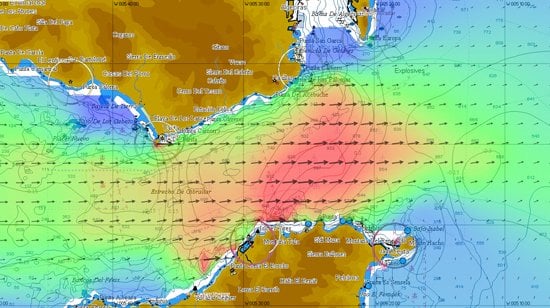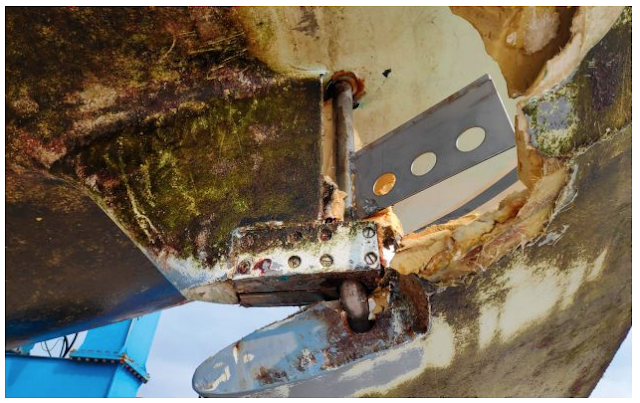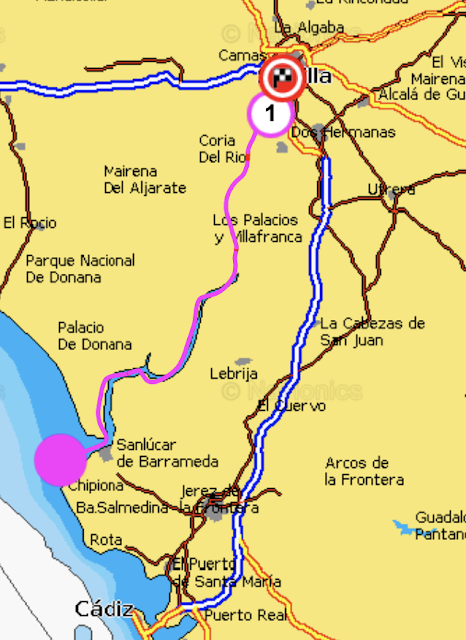Gibraltar is a particularly touristic place for its tax-free products, architecturally it does not present great interest .....
Except for this: Gibraltar is the only place in the world
where the airport runway is open to pedestrians and car traffic !
...but in the 7 days of rest waiting for the favorable wind to push us towards the Atlantic Ocean we were able to have two interesting experiences.
One is the phenomenon of currents influenced by the difference in density and salinity of the Atlantic compared to the Mediterranean sea.
The second less sympathetic but still linked to the world of the sea is an exponential increase in attacks by Orcas against sailing boats.
Currents through the Strait of Gibraltar are mainly caused by an exchange of water of different salinity (saltiness) between the Atlantic Ocean and Mediterranean Sea. The water in the Atlantic is less salty and less dense than water in the Mediterranean and it flows eastwards into the Med through the Straits as a surface layer, about 125m deep with a speed of two to three knots.
To make things more complicated, superimposed on these density-driven currents are tidal flows that can reach 4 knots. The tidal flow will either speed up or slow down the eastern flowing current, depending on the phase of the tide.
Furthermore, close to the African continent there is often a narrow counter current (i.e. out of the Mediterranean) of two knots.The model shows the complexity of the currents in the Strait, where an almost continuous flow of east going current into the Mediterrenean is either weakened or strengthened by tidal forces. Gibraltar tide currents video
Killer whales, but we prefer to call them Orcas.
7 days stop in the port of La Linea and 6 boats towed into the port for considerable damage to the rudders affected by the interaction with a group of Orcas. We spoke to some of these crews. We have therefore investigated the problem to understand if it is possible to avoid them and in the event of an attack how to behave.
Mapped area of the Orca's incidents with boats
Waiting for the favorable wind (from the east) it is better to head to the Kite Paradise: Tarifa.
One week waiting for the good wind and a cloud humid east wind finally arrived.After an in-depth study on the Orcas theme, I decided on a strategy: to sail in the direction of 254° for over 90 miles along the Moroccan coast following the (busy) route of the Cargos bound for Panama and then tack towards Cadiz following the route of a part of the cargo which they are directed to Barbate and Cadiz.
At 21h00 I reach the pleasant Cadiz after having followed the long, well signposted canal for 3 miles. In Cádiz, the Marina Puerto America is the first to enter the biga bay. Very tight spaces to maneuver but the excellent marineros are ready to help.
Cádiz is a beautiful city where you can still breathe the air of the great maritime events of the past; It is probably the oldest city founded in the western Mediterranean area by the Phoenicians in the 11th century BC.
At the time of the Punic wars it was allied with Carthage but had to recognize Roman supremacy in 205 BC.
After the fall of the Roman Empire it experienced a period of successive invasions by the Vandals, the Byzantines, the Visigoths and finally the Arabs under whose dominion it remained until 1262, the year in which it was conquered by King Alfonso X of Castile.
From that moment it resumed a period of prosperity also in conjunction with the discovery of America by Cristoforo Colombo (from here he left on the occasion of the second and fourth expeditions to the Indies). In 1497 Amerigo Vespucci leaves Cadiz for his first trip to the New World. His port became the most important in the trade between Spain and the overseas colonies of New Spain.
In the summer of 1805, the Franco-Spanish fleet found refuge from Cadiz after the unsuccessful Atlantic cruise, aimed at baiting the British to leave the Channel unguarded. After the indecisive battle of Cape Finisterre, Admiral Villeneuve entered Cadiz with the Franco-Spanish forces on 20 August, where he found himself subjected to a British naval blockade. After various indecisions, mainly due to the inefficiency of the naval squadron, the joint fleet set sail to face the English fleet on 21 October 1805, however being disastrously defeated in the battle of Trafalgar.
Before leaving Cadiz we have a fantastic idea, to contact the Autoridad Portuaria de Sevilla because it is possible to sail up for 50 nm. the mythical Guadalquivir river up to the Capital of Andalusia: Seville -> follow our river adventure in the next post!












Comments
Post a Comment
I am sailing let me some time to answer you.
Thks